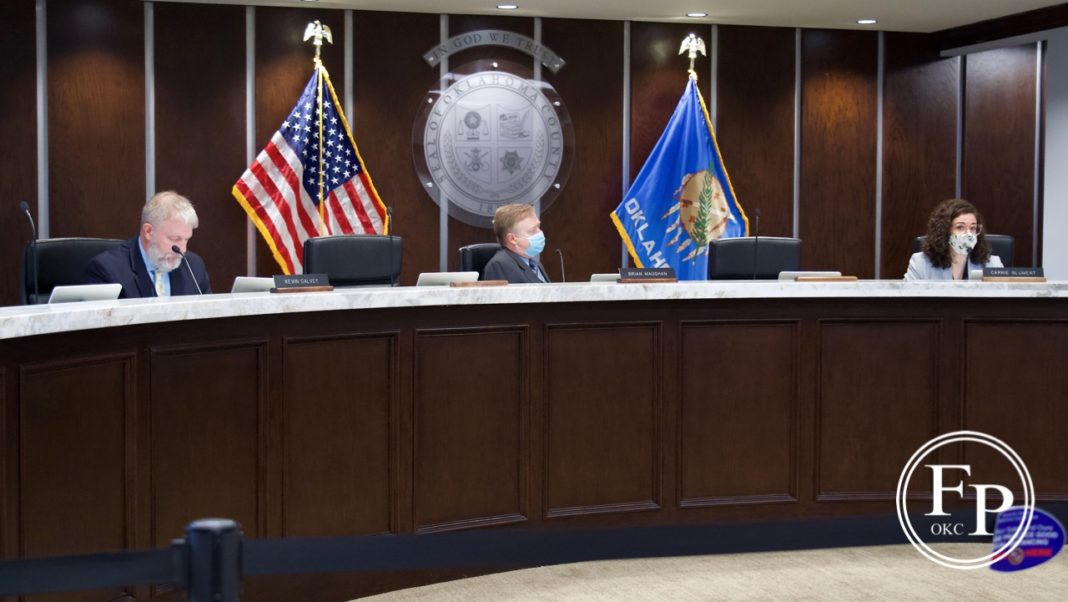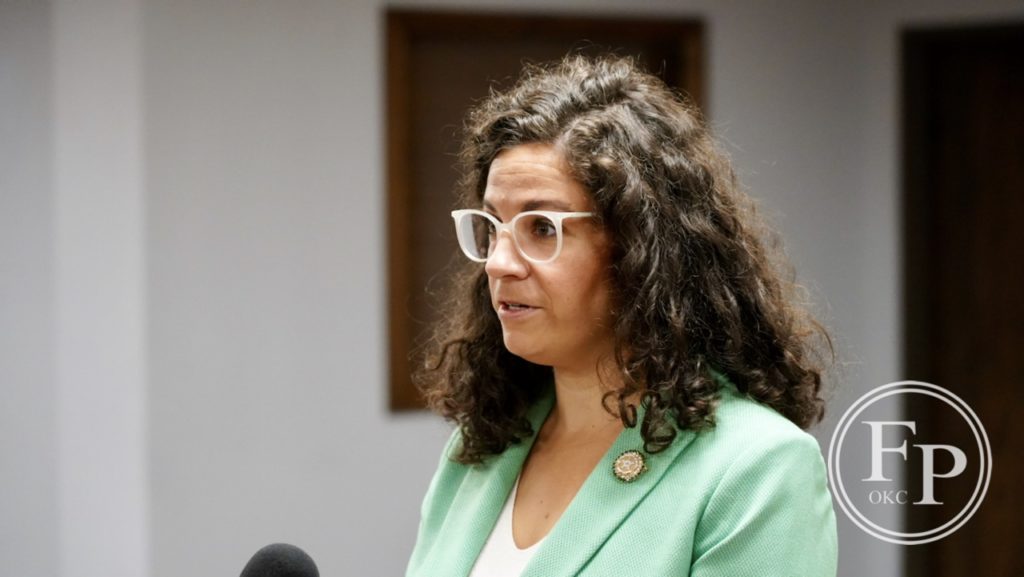Last Updated on January 20, 2021, 1:04 AM | Published: January 20, 2021
The Board of County Commissioners (BoCC) moved through a conflict-free meeting and heard reports on further repairs being made to the Jail and expansion of the SHINE program, an alternative sentencing program in the county.
They also took action on many detailed items of county business. (See the embedded agenda below.)
Oklahoma County Jail
District 1 Commissioner Carrie Blumert reported a recent visit that came after multiple deaths over just a few weeks at the jail.
She said the day she and her staff took a tour the water was off in a planned cutoff for more repairs. The detainees were told ahead of time and given water to drink during the two hours.
“I’m very happy that they were able to get that done,” said Blumert. “The water was shut off that day for a couple of hours to accommodate for that construction. But all of the detainees were given water and were told at what time the water would come back on.”
Blumert reported that they walked through receiving where law enforcement brings those arrested to be booked. They also visited the juvenile pod, the kitchen, the new staff lunchroom, the new staff breakroom, and randomly picked the fourth floor to visit.
She said they toured the future receiving area where Administrator Greg Williams explained their concept for a better way to handle receiving.
After the meeting, Free Press talked with Blumert about the Jail.
Staffing
She said that during her report in the meeting she forgot to tell about her conversation with Williams about staffing.
We know staffing has always been an issue with the jail,” said Blumert. But, I really feel like with the different management and the different way of running the facility that they should be better able to recruit new staff.”
She said that currently there are around 350 on the staff at the jail. She asked Williams how many he thought they actually needed to run the jail and his answer was about 400.
“I think a lot of the issues that the jail has can be solved with proper staffing, because detainees can be out of their cell more often, detainees can do the things that they need to do with with appropriate staff,” Blumert said.
She said that when she was there they were working on the large piec of equipment that grinds and processes about anything that detainees may flush down the toilets.
The old piece of equipment was not working the way it was supposed to and so the sewage system was getting clogged with batteries and other debris flushed and causing backups and flooding at times.
SHINE program
After surviving controversy, the SHINE program now is moving forward and preparing to expand.
The Oklahoma County website has this description of what the program is and how it works:
SHINE stands for Start Helping Impacted Neighborhoods Everywhere. It was created by Oklahoma County Commissioner Brian Maughan to better serve the public and to make low-level offenders do true community service.
Under SHINE, judges sentence non-violent offenders to do a certain number of hours of community service. They are assigned to supervised SHINE crews who go out into the community to do meaningful work that makes Oklahoma County neighborhoods and business districts safer, cleaner, better places for all.
Oklahoma County is making a request for $300,000 from the Oklahoma County Finance Authority to expand SHINE into the Oklahoma City limits. Maughan said that previously the scope of the public clean-up and graffiti abatement work was done in the unincorporated areas of the county.
Oklahoma County District Judge Kenneth Stoner presides of the county Drug Court and because of that is interested in seeing the SHINE program expand according to Maughan.
Judge Stoner was not able to attend and so Maughan summarized what he believed Stoner’s interests were in the program expanding into the incorporated areas of the county.
Inside cities
“I believe what judge stoner was going to speak to is that the courts would more fully utilize it if they saw the participants working here inside of the cities instead of where they are because of the distance that it requires the participants to travel to be in the … unincorporated areas,” said Maughan.
Oklahoma County Public Defender Bob Ravitz spoke to the BoCC and highly recommended the expansion of the program across the county.
“It’s been a wonderful program to get rid of graffiti,” said Ravitz. “It is obviously a really important part of the program, as obviously, criminal activity easily is promoted by the graffiti, sometimes with gang signs or whatever. If there’s a way to get the money, get the program started, I strongly support it.”
Ravitz said that he believed that Judge Stoner was ready to assign more drug offenders to the program in lieu of jail time if there was more capacity and the effects were able to reach into the core of the metro where often the greatest need exists.
The item passed.
Reducing jail population
After the meeting Maughan talked with Free Press more about the program.
“I’m hoping that if it gets more utilized by the judges that we can start, again reducing the jail population, which I’m confident we were a party to doing before,” said Maughan.
He said since the program has been limited to the areas far out in the county there has been less utilization of it because of the hardship of participants finding transportation far away from where they live.
Maughan said he thought that with the changes in the program the judges, DA, and the Public Defenders office would use it more often as “true alternative sentencing” and start reducing the size of the jail population.
BoCC-Agenda-1-19-21Founder, publisher, and editor of Oklahoma City Free Press. Brett continues to contribute reports and photography to this site as he runs the business.











